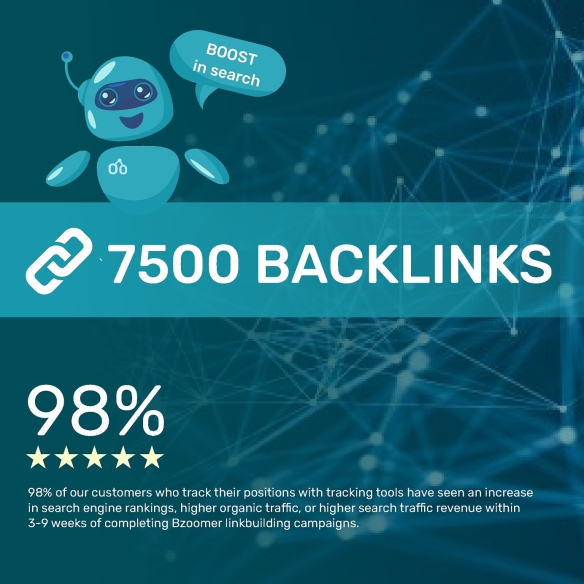In today’s world of AI-generated writing, one of the most pressing challenges is ensuring content feels genuine, engaging, and human-like. That’s where the concept of the Humanizer comes in. Whether you’re a content creator, marketer, student or professional writer, understanding exactly what a Humanizer is, how it works, and why it matters will give you an edge in producing content that stands out, ranks well and resonates with real readers.
Understanding the Term “Humanizer”
The term Humanizer refers to a tool, technique or process that takes text that was generated by artificial intelligence (AI) and refines, rewrites or transforms it so that it reads as if a human wrote it. In practical terms:
-
A Humanizer analyzes AI-generated text for tell-tale signs of robotic phrasing, repetitive structures or unnatural rhythm.
-
It then restructures sentences, varies vocabulary, smooths tone and improves readability.
-
The result is content that maintains the original meaning but feels more natural, conversational and authentic.
For example: you might generate a blog paragraph using an AI engine. On its own, it could include repetitive phrasing, typical “AI-voice” markers or lack emotional nuance. A Humanizer takes that output and remodels it so that it flows like typical human-written copy — removing mechanical patterns and injecting authenticity.
Why You Need a Humanizer for AI-Generated Content
The proliferation of AI writing tools (such as ChatGPT, Claude or Gemini) has made it easy to generate text, but also introduced new challenges:
-
Detection by AI-detectors – Many platforms (e.g., Turnitin, GPTZero, Originality.ai) can flag content as AI-generated. A Humanizer helps reduce such flags by altering the signature “AI voice”. For example, the tool at Humanize.sh is explicitly positioned as an “AI Humanizer & AI Detector” that transforms AI-generated text into human-like writing.
-
Readability and engagement – Even if checkers don’t flag your text, readers might sense the difference between an authentic human voice and an AI-generated one. A Humanizer improves tone, flow and readability. According to the Humanize.sh site: “Humanizer uses advanced natural language processing … It rewrites your content using … vocabulary diversification, sentence restructuring, tone adjustment.”
-
SEO advantages – Search engines increasingly value user-experience, readability and authenticity. Content that sounds mechanical may suffer in rankings. By using a Humanizer, you enhance the “human dimension” of your copy, which supports better engagement (lower bounce, higher dwell time) and thus can help SEO.
-
Time and scalability – If you’re producing lots of content (blogs, reports, marketing copy), manual rewriting is labour-intensive. A Humanizer automates part of the process while preserving quality. For example, Humanize.sh emphasises “free & unlimited … humanize thousands of words” and “speed … Humanize thousands of words in seconds instead of hours”.
How a Humanizer Works: Step-by-Step
To dive deeper, let’s break down how a Humanizer operates. While specific implementations differ (depending on the tool, algorithm or model), most share these core steps:
1. Input of AI-generated text
You paste in text produced by an AI model — say an article draft, essay, email or blog post.
2. Analysis of structure and voice
The Humanizer reviews the text for features typical of AI generation: e.g., repetitive sentence openings, unnatural transitions, over-formal vocabulary, lack of variation in sentence length.
3. Rewriting / transformation
Using NLP (natural language processing) and machine-learning models, the Humanizer:
-
Restructures sentences to vary rhythm and length
-
Replaces overused phrases with more natural synonyms
-
Adjusts tone to be conversational (if required)
-
Maintains the original meaning and facts (so the core message stays intact) — for example, the Humanize.sh site states: “Keeps your meaning.”
-
Ensures context-preservation: important when you don’t want the rewriting to change your facts or intent.
4. Output of humanized text
You receive a version of your text that flows more like human-written content, with fewer robotic markers and better readability.
5. Review and fine-tune
While a Humanizer helps automate the process, it’s still beneficial for you to review the output, align it with your brand voice or style, and make minor edits if needed.
What to Look for in a Good Humanizer Tool
If you’re considering using a Humanizer (or you already do), here are key criteria to evaluate:
-
Quality of rewriting: Does the tool maintain meaning while significantly improving tone and flow? A leading option (Humanize.sh) claims to use “pattern detection, vocabulary diversification, sentence restructuring, tone adjustment” to this end.
-
Detector-bypass effectiveness: If your use-case involves passing AI detection tools, check whether the humanizer’s output genuinely reduces flags.
-
Language support: Good humanizers support multiple languages. Humanize.sh supports “50+ languages (English, Spanish, French, Arabic, Chinese, and more)”.
-
Privacy and security: Especially for academic or professional use, it matters whether your text is stored, shared or reused. Humanize.sh states: “Your data is never stored, tracked, or shared.”
-
Cost / accessibility: Some tools are free, some require subscriptions. For example, Humanize.sh offers a free plan and paid tiers.
-
Integration / workflow: How easy is it to paste in your text, get output, integrate into your writing workflows, support for documents, bulk processing?
Real-World Use-Cases for a Humanizer
Let’s look at specific scenarios where a Humanizer is highly beneficial:
-
SEO Blog Posts: Suppose you’ve generated a large volume of blog posts via AI for your website. By passing them through a Humanizer, you make the content sound less “machine-made” and more like a genuine human author — improving reader trust and lowering bounce rate.
-
Academic Writing: Students and researchers who use AI tools may risk detection by plagiarism or AI-detector platforms. A Humanizer can help keep the voice natural, reducing the likelihood of flags in systems like Turnitin or GPTZero.
-
Marketing & Advertising Copy: Writers creating product descriptions, email campaigns or social posts want the tone to reflect brand personality. A Humanizer ensures the copy doesn’t feel generic or robotic.
-
Enterprise Reports & Presentations: Large organisations generating internal reports, automated drafts or summaries via AI can use a Humanizer to polish the text so it sounds professional and human.
-
Multilingual Content: With global operations or multi-language websites, you might generate content in many languages via AI. A multilingual Humanizer supports rewriting in these languages to maintain natural flow across markets.
Practical Tips to Get the Best from Your Humanizer
Here are some actionable tips to maximise the benefit of using a Humanizer:
-
Start with good AI input: The better your original AI-generated draft, the better the Humanizer can work. Avoid overly raw, disorganised input.
-
Clear purpose & audience: Before running the text through a Humanizer, define the audience and tone. Is this blog content, formal report, friendly marketing copy? Many humanizers (e.g., Humanize.sh) allow specifying tone.
-
Review and personalise: After humanization, read through the output to ensure it aligns with your brand voice, contains any specific terminology, and is free of errors.
-
Use as foundation, not finish line: A Humanizer can save time, but human editing still adds value — customisation, unique insights, brand-specific language.
-
Check for context consistency: Especially if your AI-generated text had references, statistics or quotes — make sure they remain accurate after rewriting.
-
Blend human input with AI + Humanizer: One effective workflow: generate via AI → run through Humanizer → human edit. This gives speed plus quality plus authenticity.
-
Track outcomes: For SEO or content marketing, monitor engagement metrics (bounce rate, time on page, conversions) and adjust your workflow accordingly.
Humanizer in the Context of SEO & Google’s E-A-T
When we talk about SEO, we cannot ignore the relevance of Google’s emphasis on E-A-T (Expertise, Authoritativeness, Trustworthiness). Content that reads overly mechanical or templated may fail to convincingly reflect human expertise or trust. A Humanizer helps boost the trustworthiness and authenticity of your copy by:
-
Making tone more conversational and less “bot-like”
-
Ensuring readability and flow, which enhances user experience
-
Helping you maintain consistent author voice, which reinforces authority
-
Reducing the likelihood that users label the content as “AI-generated” — which could harm brand perception
Additionally, recent updates to search‐algorithms increasingly reward content that demonstrates real value for humans, not just search-engine optimisation. Using a Humanizer aligns with that shift by prioritising human-centred readability over mechanical keyword stuffing.
Common Misconceptions About Humanizers
Let’s clear up some misunderstandings:
-
“It’ll make content 100 % human-original” — A good Humanizer enhances readability and voice, but it doesn’t generate original ideas or research. You still need human insight.
-
“Passes all AI detectors automatically” — While many humanizers aim to reduce detection, no tool can guarantee absolute invisibility. Always review.
-
“You don’t need human editing at all” — Human editing remains valuable, especially for tone, accuracy, brand alignment and uniqueness.
-
“It’s only for students” — False. As noted above, marketers, agencies, enterprises, multilingual publishers all benefit from a Humanizer tool.
-
“Over-using it removes brand voice” — If you rely solely on automated rewriting without brand-specific edits, you risk losing distinct voice. Always tailor post-humanisation.
Choosing and Implementing the Right Humanizer Strategy
Evaluate your priorities
-
Is speed your main goal (high volume of content)?
-
Is undetectability (passing AI detectors) critical?
-
Is brand tone/voice the most important factor?
-
Are you producing in multiple languages?
Select the tool
Look for a Humanizer tool that supports your requirements: good rewriting quality, multi-language support, privacy, cost effectiveness. For example, Humanize.sh advertises “free AI humanizer tool” with “instant results” and support for 50+ languages.
Define workflow
-
Generate content with your AI writing tool
-
Run the draft through the Humanizer
-
Review/edit for brand-voice, accuracy, uniqueness
-
Publish and monitor performance
-
Iterate based on metrics (engagement, user feedback, SEO performance)
Align with SEO
-
Ensure your content still includes relevant keywords (including Humanizer in this case) in key locations: headline, sub-heads, first paragraph, conclusion.
-
Use supportive keywords like “AI humanizer tool”, “humanize AI text”, “humanize content”, “AI detection bypass”.
-
Maintain readability (aim for moderate sentence length, clear paragraphs). A Humanizer helps in readability.
-
Ensure your meta-title and meta-description reflect the topic clearly and include the keyword Humanizer.
-
Use internal linking (if appropriate) to related content about AI writing, rewriting tools, content authenticity.
Future Trends: Why the Humanizer Will Matter Even More
As AI-writing capabilities advance and detection tools become more sophisticated, the role of the Humanizer is set to increase in importance:
-
AI models will produce ever better text, but markers of AI-origin (subtle patterns) will remain. Humanizers will adapt to detect and remove them.
-
AI detectors will evolve (e.g., improved pattern recognition). Humanizers must stay ahead with updated algorithms. For example, the Humanize.sh platform claims continuous updates to “stay ahead of detection technology”.
-
Brand authenticity will be a major differentiator: audiences will increasingly value content that “feels human”. Tools like Humanizer support that requirement.
-
Multilingual content production will ramp up. Humanizers with broad language support will become a strategic asset for global publishers.
-
Regulatory or academic standards may tighten around AI-generated content disclosures. Humanizers can help manage voice and authenticity in compliance-sensitive contexts.
Summary: Embracing the Humanizer for High-Quality Content
In summary:
-
A Humanizer is a tool or process that takes AI-generated text and transforms it into natural, human-sounding writing, preserving meaning while improving tone, flow and authenticity.
-
The benefits are numerous: improved readability, better user engagement, lower risk of detection, enhanced brand voice and scalability.
-
To maximise value, select a high-quality Humanizer, define a clear workflow (AI → Humanizer → human edit → publish), integrate it with your SEO strategy and monitor results.
-
As AI and detection technologies evolve, the Humanizer will become a vital component in content production that wants to stay human-centric, credible and effective.
If you’re ready to elevate your AI-generated writing — to sound less like a machine and more like a human — incorporating a Humanizer into your workflow may be the key.
Call to Action
Ready to transform your AI-generated content? Try a Humanizer tool today. Paste your draft, click “humanize”, and you’ll be on your way to creating natural, engaging, undetectable-feeling content that resonates with readers and performs for SEO.


